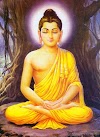(Om Ah Ra Pa Tsa Na Dhi)
Explaining by HH Khenchen Lama Rinpoche.
OM (ཨོཾ) – also written Aum, is a sacred and mystical syllable that originates from Hinduism but is now common in Buddhism, Hinduism, Sikhism, Jainism, and the Bön tradition. Interestingly, it is considered that the Islamic “Amin” and Christian “Amen” are both derived from this syllable.
OM (ཨོཾ) – also written Aum, is a sacred and mystical syllable that originates from Hinduism but is now common in Buddhism, Hinduism, Sikhism, Jainism, and the Bön tradition. Interestingly, it is considered that the Islamic “Amin” and Christian “Amen” are both derived from this syllable.
AH (ཨ) – represents the direct understanding of the nature of phenomena.
RA (ར) – represents the understanding of emptiness from the Hinayana point of view. These profound teachings of the ”Hinayana” emptiness are suitable for those practitioners that have problems in understanding emptiness in its ultimate nature.
RA (ར) – represents the understanding of emptiness from the Hinayana point of view. These profound teachings of the ”Hinayana” emptiness are suitable for those practitioners that have problems in understanding emptiness in its ultimate nature.
PA(པ) – represents meditation. There are 2 basic types of meditation: the non-conceptual (without thinking) meditation and the conceptual (thinking).
TSA (ཙ) – represents the importance of nirvana and samsara. The exact nature of both samsara and nirvana is emptiness. But if we don’t understand the exact nature of samsara, it manifests to us in the form of 3 sufferings. It is essential to understand the importance of both nirvana and samsara.
TSA (ཙ) – represents the importance of nirvana and samsara. The exact nature of both samsara and nirvana is emptiness. But if we don’t understand the exact nature of samsara, it manifests to us in the form of 3 sufferings. It is essential to understand the importance of both nirvana and samsara.
NA (ན) – represents karma (action). In short, it signifies that all the suffering we experience is the result of our previous non-virtuous actions (negative karma) and all our happiness results from our previous virtuous deeds (positive karma). There are 2 basic kinds of karma: the collective karma and the individual karma. We need to understand that with each action of our speech, body, and mind we are sewing the seeds of our future experience.
Dhi (དྷཱི) represents the bija, or seed syllable, of Boddhisatva Manjushri. After chanting 108 dhihs, envision the dhi on your tongue coming down and absorbing into the dhi on the moon disk at your heart, which becomes very brilliant. Immeasurable red-light rays radiate from that seed syllable, filling your entire physical body and purifying all negative karma (actions), sickness, and obstacles.
In short, the view helps us recognize the correct path. Meditation is the actual practice through which we develop an experiential understanding of the path, leading to a change in our mind and feelings. Activity combined with wisdom gives us the capacity to help sentient beings in an efficient way at the right time.
Fruition is the happiness and courage resulting from accomplishing our virtuous intentions.
 |
| HH Khenchen Lama Rinpoche |






0 Comments